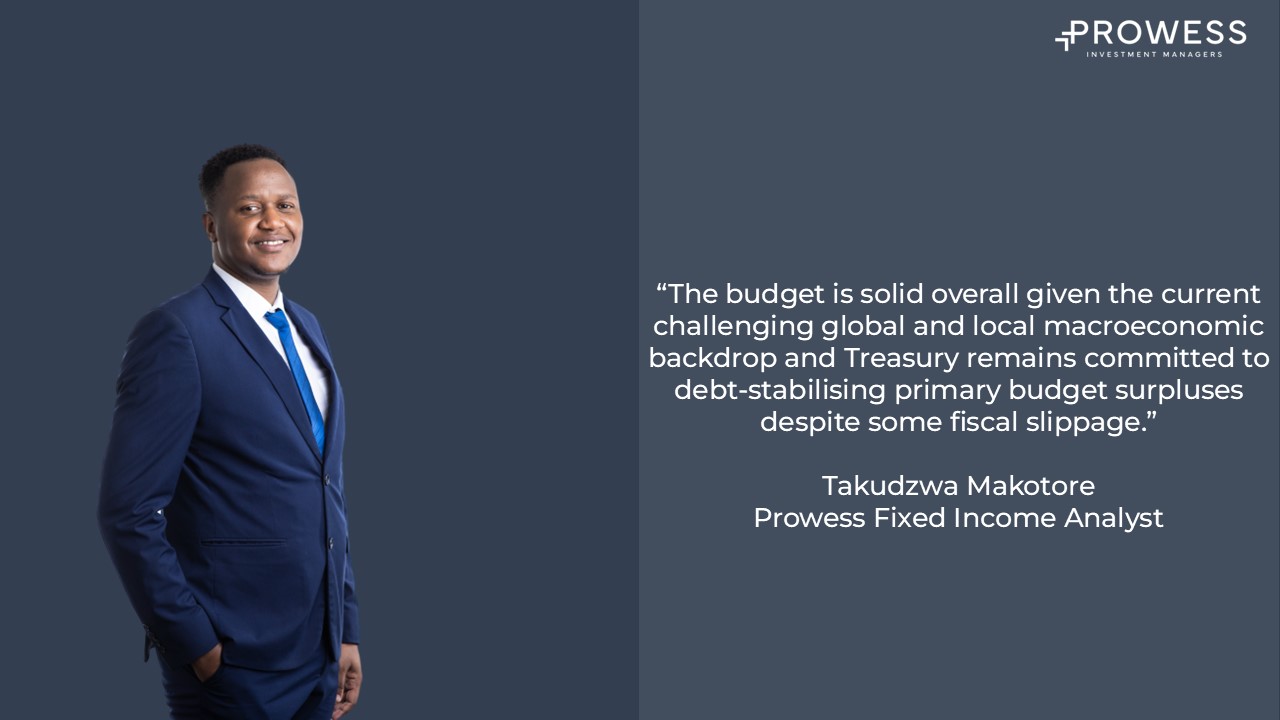Medium-Term Budget Policy Statement Update
Earlier today, Finance Minister Enoch Godongwana delivered the Medium-Term Budget Policy Statement (MTBPS) for 2024. In his statement, he paints a cautious picture of growth (2024: 1.1%; 2025-2027: 1.7%) while highlighting an ambitious infrastructure-driven plan.
The MTBPS outlined South Africa’s economic, fiscal, and policy outlook amidst both domestic and international challenges. Global growth is forecasted at 3.2% for 2024 and 2025, with trade growing at 3.3%. Geopolitical tensions, such as conflicts in the Middle East and Ukraine, could impede growth, especially for emerging markets like South Africa. Domestically, the economy is forecast to grow by 1.1% in 2024, down from the 1.3% forecast published by National Treasury (NT) in February 2024.
The government’s strategy focuses on four pillars: maintaining macroeconomic stability; implementing structural reforms; enhancing infrastructure; and strengthening state capacity. Structural reforms, particularly through initiatives like Operation Vulindlela, target job creation and economic efficiency by improving areas like data cost, water use license processing and the introduction of an eVisa system to travellers from 34 countries. Infrastructure development will be bolstered by private investment, focusing on energy, transportation, and water sectors. Additionally, reforms are underway in public procurement to enhance transparency and reduce corruption.
The fiscal outlook underscores debt stabilization, as South Africa’s debt is expected to reach R6.05 trillion by 2025/26, with debt-service costs reaching R388.9 billion. Fiscal measures aim to achieve a primary surplus to stabilize debt at 75.5% of GDP by 2025/26. Spending is adjusted to prioritize social services, disaster relief, and essential infrastructure, while managing the public-sector wage bill.
Despite efforts, near-term revenue shortfalls and increased expenditures pose challenges. The projected revenue for FY24/25 is estimated at R17 billion lower than initial forecasts, largely due to underperforming import VAT and fuel levies. In addition, medium-term revenue projections suggest a persistent shortfall, averaging R15 billion annually. On the spending side, the budget has increased by an annual average of R14 billion to address critical areas, including troop deployments, infrastructure projects, and unplanned expenditures from events such as floods. A voluntary retirement program aims to reduce the government wage bill, though the overall budget deficit is anticipated to rise by 0.4% of GDP, with the national debt expected to peak at 75.5% of GDP in FY25/26.
Local governance is a focal point, with efforts to improve municipal financial management and relieve Eskom-related municipal debt. To address disaster response, the National Treasury will implement a risk financing strategy from 2025. On the international stage, South Africa will assume the G20 presidency, promoting a theme of solidarity and sustainable development, aiming to leverage its platform for African interests.
We believe the budget is solid overall given the current challenging global and local macroeconomic backdrop. National Treasury remains committed to debt-stabilising primary budget surpluses. There was nonetheless some fiscal slippage (relative to the 2024 Budget forecasts), which is modestly worse than we expected in the medium term. As expected, the MTBPS encouragingly placed significant emphasis on growth and fiscal reforms.


